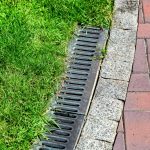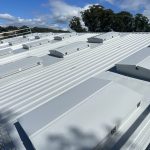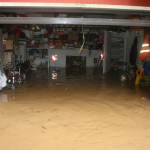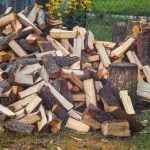How to Keep Your Roof Safe During the Australian Summer

There’s something unrelenting about an Australian summer – that fiery, shimmering season where the sun doesn’t just shine; it scorches. Roofs, those silent guardians perched above our heads, endure the brunt of it. Every ray, every gust, every sudden downpour or merciless heatwave–they all wage war on tiles, shingles, and flashing. Keeping your roof safe during summer isn’t just a seasonal chore; it’s a ritual of preservation, a safeguard against the chaos of climate and time.
-
The Enemy Above: Sun, Heat, and UV Brutality
The summer sun in Australia is not gentle. It’s aggressive, unfiltered, almost theatrical in its cruelty. Asphalt shingles begin to curl at the edges, terracotta tiles expand and contract until hairline fractures appear, and metal sheets hum under thermal stress. The damage isn’t immediate–it creeps in like dry rot, invisible until it isn’t.
Consider UV radiation, that unseen saboteur. It weakens sealants, bleaches coatings, and fades paint to a ghostly pallor. Over time, what was once a sleek roof can look tired and brittle. The fix? Reflective roof coatings or paints engineered to repel heat. These aren’t mere cosmetic upgrades–they’re shields, microscopic armours that bounce sunlight back into the atmosphere instead of letting it bake into the rafters.
-
Ventilation: The Unseen Hero
A stifling roof cavity is a recipe for structural misery. Without adequate ventilation, heat builds, moisture lingers, and timber weakens. It’s the kind of slow, silent deterioration that doesn’t show up until the ceiling starts bowing or insulation starts smelling faintly of mildew.
Ridge vents, soffit vents, and whirlybirds are your secret weapons. Think of them as pressure valves for the summer air – letting the hot air escape, inviting the cooler air in. The payoff isn’t just a happier roof; your air conditioning system will thank you too. Reduced attic temperatures mean reduced cooling loads, translating into a home that breathes better, costs less to run, and endures longer. Working with a roofing company on preventative maintenance ahead of the warm weather is always going to be a better bet and more cost-effective than emergency repairs.
-
Check the Flashing Before It Fails
Metal flashing – those thin strips around chimneys, skylights, and vents – may not look like much, but they’re the difference between a dry ceiling and a soggy disaster. Under summer’s glare, metal expands and contracts with mechanical precision, loosening screws, warping edges, and breaking seals. A single compromised junction can let in torrents during a storm.
Inspect these areas with the curiosity of a detective. Look for separation, rust, or missing sealant. If you see lifting edges, reseal with high-grade, UV-resistant silicone. If the metal looks like it’s been through battle, replace it before the next summer downpour turns your roof cavity into a swimming pool.
-
Gutters: Where Neglect Breeds Trouble
Ah, gutters – those narrow channels that so many homeowners forget exist until they overflow. Summer storms in Australia don’t knock politely; they crash in with sheets of rain and debris. A single afternoon storm can expose months of negligence. Clogged gutters lead to water pooling, which leads to rot, which leads to mould, which leads to the kind of repair bills that make you rethink your life choices.
So, clear them. Regularly. Leaves, sticks, dust, bird nests – all must go. Consider installing gutter guards if your home sits beneath a canopy of eucalyptus or pine. They’re not infallible, but they reduce maintenance and extend the lifespan of your system. The goal? Water should flow freely and swiftly, never lingering, never backing up.
-
Inspect After Every Storm
Australian summers don’t do moderation. One week of blistering heat can be followed by storms so fierce they sound like artillery fire on your roof. After each major event, climb up (safely) or hire someone to. Look for broken tiles, shifted sheets, or exposed underlayment. A few minutes of post-storm inspection can prevent weeks of heartache later.
If you spot a tile that’s cracked or missing, replace it immediately. Roof damage multiplies exponentially – a small breach invites moisture, moisture breeds rot, rot weakens structure, and before long, you’re not patching a roof; you’re rebuilding one.
-
Trim the Trees
Branches overhanging your roof may look picturesque, but they’re quietly plotting your downfall. In high heat, branches become brittle. When the wind picks up, they can scrape, dent, or even crash straight through tiles. Shade is nice, but not at the cost of structural safety.
Trim any branches within two metres of your roofline. Not just to prevent impact, but to stop leaves and seeds from accumulating in gutters or blocking downpipes. Plus, fewer branches mean fewer critters – possums, rats, and birds – using your roof as a midnight playground.
-
Watch for Mould and Algae
Humidity and heat – a pairing as Australian as surf and sand, but a nightmare for roofs. These two invite algae, moss, and mould to throw a party on your tiles. They thrive in shaded, damp areas, eating into protective coatings and slowly undermining roof integrity.
If you notice black streaks or green fuzz forming, act fast. Use a gentle roof cleaner designed for your material type. Avoid harsh, abrasive pressure washing – it might make things look clean in the short term but can strip away years of protective surface treatment. A better option is a low-pressure wash paired with a biodegradable solution that stops regrowth.
-
Annual Professional Inspection
There’s a point where even the most vigilant homeowner must admit defeat – or rather, prudence. Once a year, ideally before summer, have a professional roof inspection done. Think of it like a medical check-up, but for the largest surface of your home.
A qualified roofer will identify what your eyes can’t: micro-fissures in tiles, subtle shifts in flashing, granule loss, or structural sagging invisible from ground level. Many offer thermal imaging scans that detect trapped moisture before it blossoms into decay. The cost of inspection pales in comparison to the cost of emergency repair.
Bonus Tip: Reflect and Insulate
A cooler roof is a happier roof. Light-coloured materials reflect more solar energy, keeping your attic temperatures lower and reducing heat stress on roofing components. Combine that with modern insulation, and you’ll create a microclimate that stands defiant against the heat.
Foil-backed insulation or radiant barriers can reduce roof surface temperatures by dozens of degrees. It’s not just comfort–it’s longevity. Every degree you shave off that heat load extends your roof’s lifespan and lessens the risk of premature degradation.
The Australian Summer Is Inevitable – Damage Isn’t
In the vast, sunburnt country where the mercury soars and the storms strike without mercy, your roof is both shield and shelter. It doesn’t complain, doesn’t rest, and asks only for occasional attention in return. A neglected roof might survive one summer, maybe two. But eventually, heat, water, and time win every battle you don’t fight.
So inspect it. Maintain it. Respect it. Because under the unrelenting Australian sun, safety isn’t passive–it’s proactive.
Your roof might not thank you in words, but it will repay you in silence–the kind of silence that means everything above is secure, and everything beneath remains untouched by the fury of summer.






























